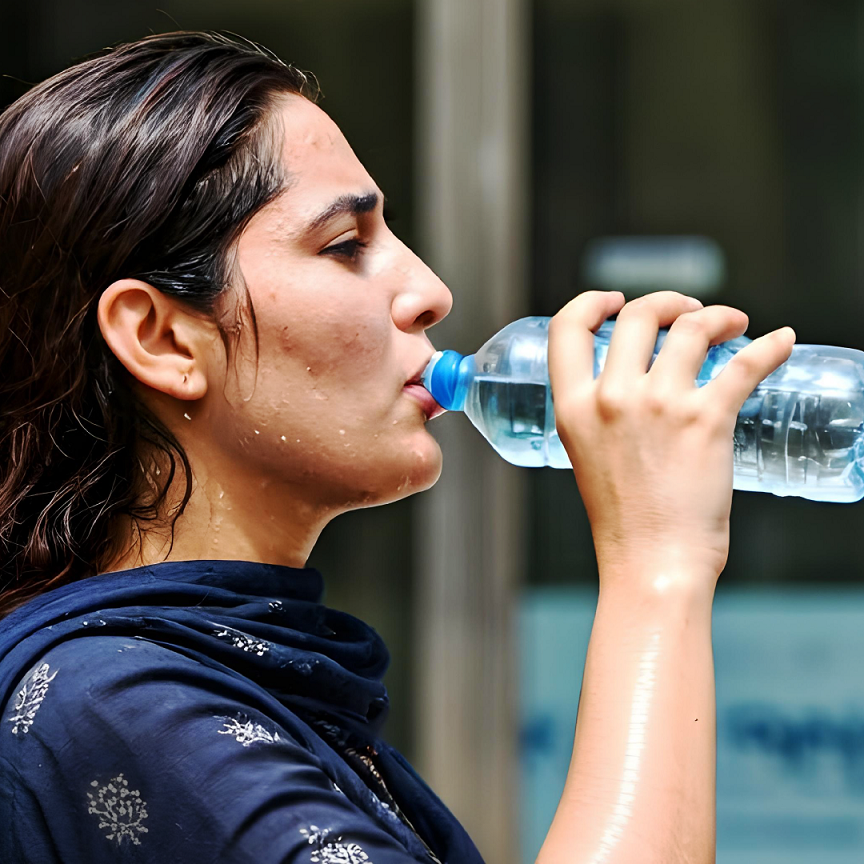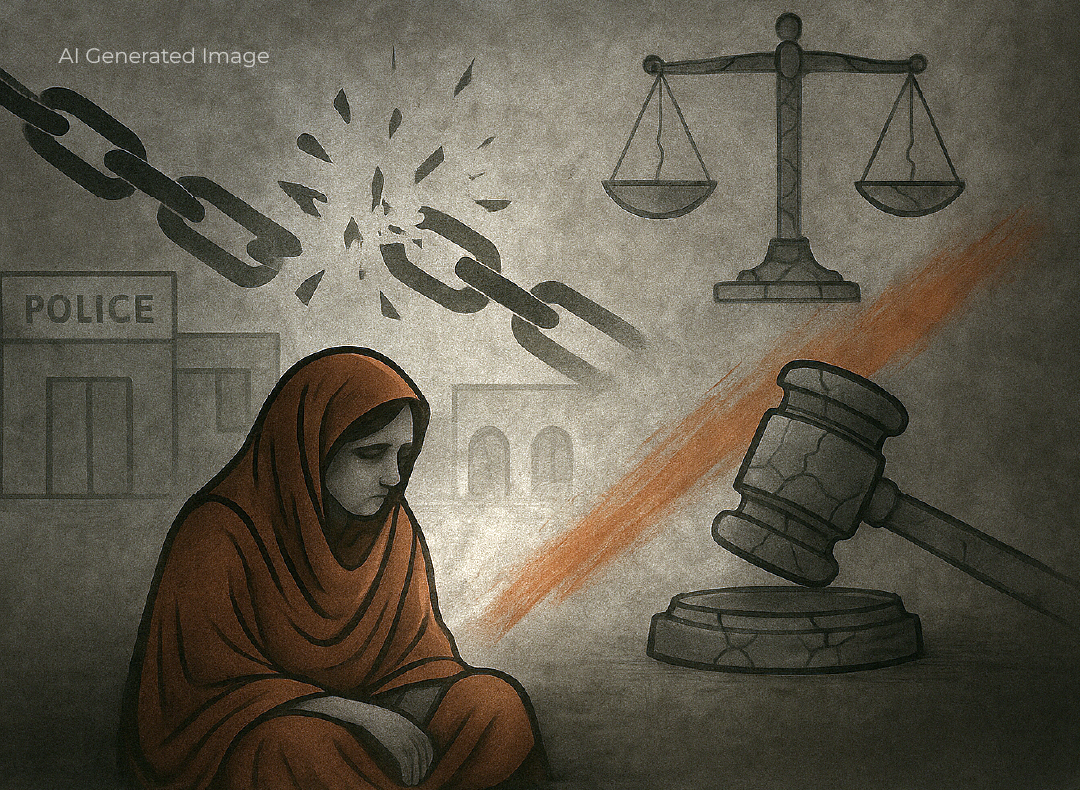As the scorching sun rises over Karachi, 45-year-old Yasmin Ahmed braces herself for another grueling day. Living in a mud house in one of the densely populated Korangi neighborhoods of the city, Yasmin knows well the struggle of coping with the scorching heat. Power cuts have become an unrelenting enemy, turning her home into an unbearable oven and making daily life a battle for survival.
Yasmin, a single mother of two, works long hours at a local garment factory. Her meager earnings barely cover the essentials, and with the increasing frequency of heatwaves, the additional cost of trying to stay cool is a burden she cannot afford. "When the power goes out, it feels like we're living in an oven," she says, wiping sweat from her forehead. "My children can't sleep; they can't study. We're just trying to make it through each day.”
Yasmin's story is all too common in the heart of Karachi. The city's aging power grid struggles to keep up with the growing demand for electricity, leaving residents like Yasmin to face brutal consequences. As temperatures rise and heatwaves become more intense, Karachi's energy crisis poses a grave threat to its most vulnerable citizens.
The effects of the energy crisis are felt most acutely in low-income neighborhoods like Yasmin's, where residents cannot afford backup generators or air conditioning units. Instead, they rely on ceiling fans and open windows to keep cool—methods that provide little relief during prolonged power outages.
Karachi's heatwave Predictions and lack of Data
Last week, the American University of Maryland released a crucial forecast about Karachi's future climate, highlighting an alarming rise in temperatures in the coming years.
Since 2015, Karachi has been experiencing record-breaking heat, the effects of climate change are increasingly felt in the city. According to university forecasts, the temperature in Karachi is expected to increase by 3.3% in the near future.
The report further states that the temperature may increase by five to six degrees in more than four thousand cities around the world by 2080. Among the cities most affected by climate change in Pakistan are Karachi, Lahore, Faisalabad, Multan, Rawalpindi, Islamabad, Peshawar and Quetta.
According to the report, Karachi's summers are expected to become 18.2% drier, with winters being five degrees warmer and only a 0.4% chance of rainfall. The report indicates that Karachi's climate may soon resemble that of the Saudi Arabian city of Al-Baha.
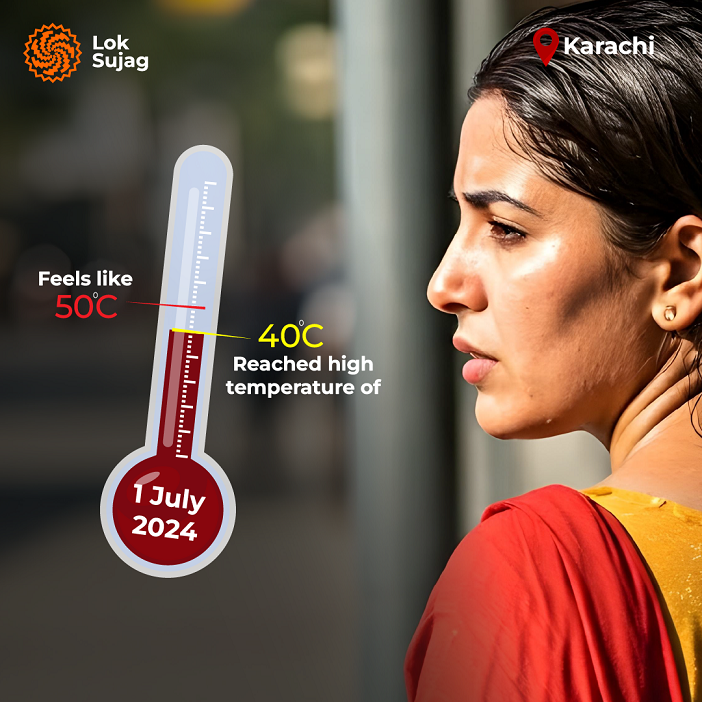
It is pertinent to mention here on July 17, temperatures in Karachi reached 40 degrees Celsius, with the heat index feeling like more than 50 degrees Celsius. The night of July 17 was recorded as the second hottest night of the year, following July 1.
The Meteorological Department reported that the average nighttime temperature in July is 27.9 degrees Celsius.
Over the last week on July 17 and 18, more than 30 bodies have been discovered across Karachi as temperatures soared above 40.5 degrees Celsius. With extremely high humidity levels, the "feels-like temperature" exceeded 50 degrees, exacerbating the city's heatwave crisis.
Charity organizations and health experts fear that the majority of these deaths may have been caused by the extreme heat. However, the health department appeared less alarmed, reporting only two deaths due to heatstroke on 17 June and none on 18 June
Despite this, the health department acknowledged that a total of 118 people were treated for heatstroke at various hospitals over the 17 and 18 July of last week, all of whom were discharged after receiving medical care.
Faisal Edhi told Lok Sujag in an interview that there was an unusual increase in the arrival of bodies starting June 19. However, on June 21 alone, Edhi received 78 bodies, and by June 25, a total of 568 bodies had been brought in.
According to Edhi, under normal circumstances, about 30 bodies arrive daily, with a maximum of up to 150 bodies over three days. However, the daily arrival of over 100 bodies reflects an extraordinary situation.
Edhi further explained, "These are usually people from labor communities, from lower-middle and low-income areas where power outages are very frequent. When we ask those bringing bodies to the morgue how they passed away, the answer is that the heat wave is severe, and since there is no electricity in their homes, everyone’s health is deteriorating.”
Edhi volunteer Muhammad Nadeem told Lok Sujag that during the recent heatwave, they transferred around eight people to the hospital from the areas of Korangi Town, Landhi, and nearby neighborhoods, who had fainted due to the intensity of the heat on the streets.
It would be premature to confirm the specific cause of individual deaths. However, the increase in deaths has occurred at a time when temperatures in Karachi exceeded 40 degrees Celsius, and according to various reports, the temperature felt as high as 49 degrees Celsius due to humidity.
However, Karachi Commissioner Syed Hassan Naqvi, in a conversation with Lok Sujag, rejected reports of large-scale deaths from the heatwave in the city. According to him, the number of heatstroke-related deaths in Karachi has reached 51 since June, and no organization, including welfare agencies, should release data on deaths without first confirming it with the government and administration.
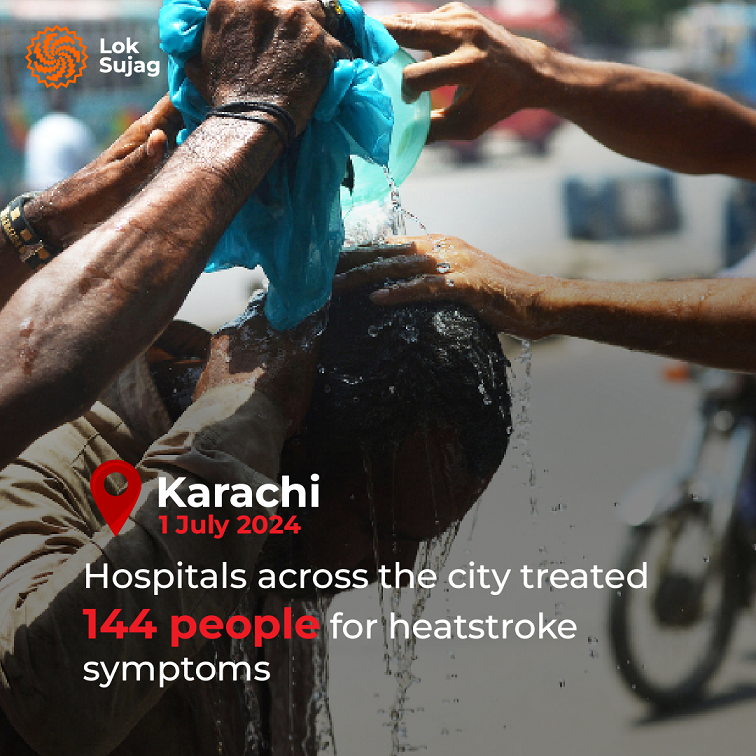
The actual number of deaths during the recent heatwave in Karachi has not been confirmed, and the statistics being reported regarding these deaths have not been verified by any source.
Chief Meteorologist Sardar Sarfraz reported that the temperature in Karachi peaked at 40.5 degrees Celsius earlier this month. He warned of potential rain in the city's suburban areas if the current low air pressure persists. Sarfraz explained that the return of sea breezes in mid-July brought some relief, but predicted another rain spell commencing around July 29 or 30. This rainfall is expected to be intermittent until early August, with moderate to heavy showers in various parts of the city.
The Pakistan Meteorological Department had issued an early warning to citizens about the impending severe heatwave. In light of this, the National Disaster Management Authority also issued guidelines for taking precautionary measures and published a booklet titled "Heatwave Guidelines 2024," which outlines measures to prevent the adverse effects of extreme heat at both government and individual levels.
Urban planning scientist Muhammad Toheed, associated with Karachi Urban Lab, told Lok Sujag that a heat management plan was developed in 2017. This plan was revised and updated in May of the same year under the supervision of the Karachi Commissioner.
Toheed further explain, the necessary measures outlined in the plan were not implemented. Practically, the government or administration cannot claim to be managing the heat simply by placing a cold water cooler on Karachi's streets. The effective solution is cooling centers, which are used globally in regions facing extremely high temperatures. These centers provide temporary relief by establishing cooling facilities to protect low-income communities from the intensity of the heat.
Heatwave and Weak Healthcare The Need for Accurate Data
Karachi's healthcare system is facing immense pressure as hospitals and clinics struggle to handle the surge in patients. Imran Sarwar Sheikh, head of the emergency department at the government-run Civil Hospital Karachi, told Lok Sujag that between June 23, and the night of Wednesday, June 25, 267 individuals suffering from heatstroke were admitted. Among them, 12 died in extremely critical conditions.
He further said hospitals across the city treated 144 people for heatstroke symptoms on 1 July. Out of these, 34 patients were admitted for further care, while 136 were discharged after recovery.
While the health department's data did not align with the numbers shared by the charities, medical experts largely support the claims made by Edhi and Chhipa. They also criticized the city's healthcare system, which has failed to establish a reliable method for determining the cause of death, especially when so many bodies are found within a short period.
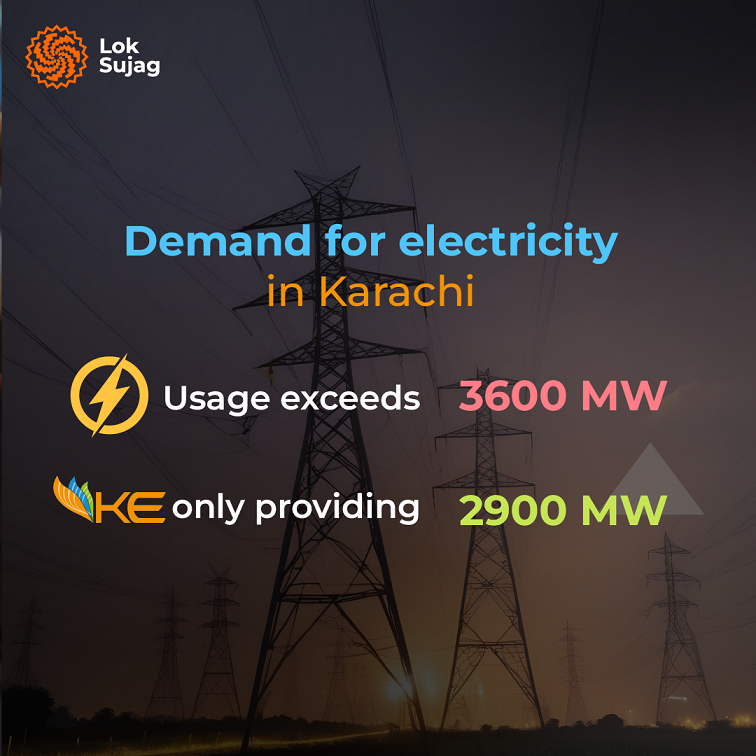
“It’s so unfortunate that there’s no system in place at the government level to determine the cause of death when it’s clear that something unusual is happening,” said Abdul Ghafoor Shoro , secretary general of the Pakistan Medical Association (PMA).
“As a common practice, you will often find ‘cardio respiratory failure’ listed as the cause of death, merely as a formality. There is rarely precise information indicating whether a person died of diabetes, hypertension, cardiac arrest, dehydration, or heatstroke. We have repeatedly demanded that the government establish a system to provide this crucial information, which is essential for making key policy decisions.”
Dr. Ghafoor Shoro added that with such “harsh weather,” it is widely believed that the significant number of bodies found in the city is due to the extreme heat and humidity.
“In situations like this, when natural calamities or health challenges arise, the importance of accurately determining the cause of death becomes paramount,” said Dr. Sajjad, a renowned ENT surgeon.
“If such a system isn't established, speculation and confusion will inevitably arise. Accurate data is crucial for building an effective healthcare system capable of responding to the challenges we face today. We saw during the COVID-19 pandemic how data-driven policies were instrumental in saving lives.” he added.
The Ashura procession on M.A. Jinnah Road on Wednesday further highlighted the severity of the heat conditions.
Causes of Karachi's Extreme Heat Climate Change or Urban heat islands
Khadija Shahid brought her husband to Karachi's Jinnah Hospital at 12 noon when he was working as a laborer in the construction of a house near their residence in Korangi.
Khadija said that her husband had been unwell since the previous night, and they did not have enough money at home to even cook dinner. Despite her urging him to rest, he went to work in a feverish state for the sake of our children. Just an hour later, she received a call saying that Shahid had fainted and needed to be urgently taken to the hospital.
Khadija explained that the house they live in Korangi is made of cement, which makes it extremely hot during the day. However, at night, the intensity of the heat feels even higher compared to the daytime.
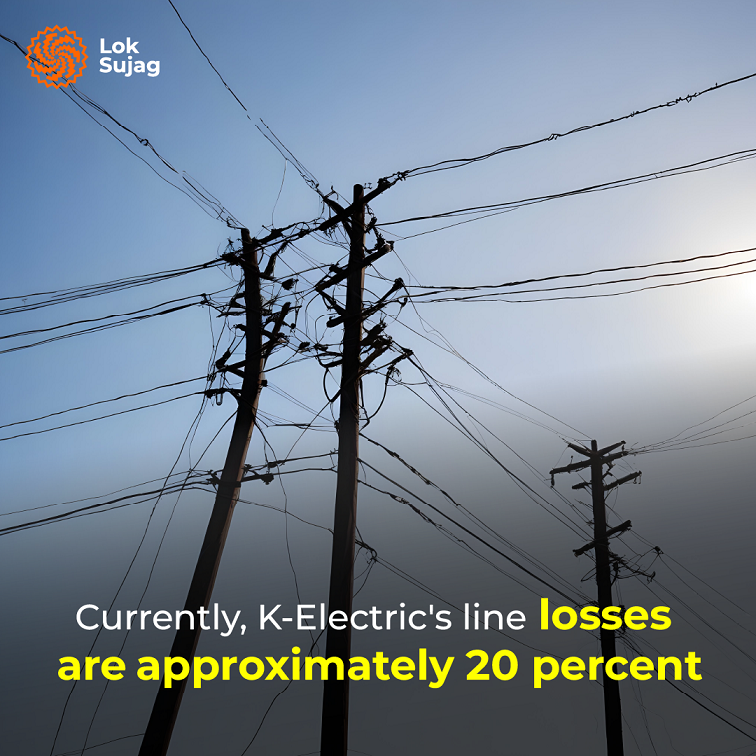
Tears welled up in Khadija’s eyes as she described how the frequent power outages in this heat make it feel like a battle between life and death. "My entire family is facing this painful situation, and I have been dealing with it for more than 25 days," she said.
Environmental scientist point to the city's rapid urbanization and lack of greenery as significant contributors to the rising temperatures. Dr. Amir Alamgir, an assistant professor at the Institute of Environmental Studies at the University of Karachi, explains, "Basically, we have turned Karachi into a concrete jungle. There are many projects and housing schemes due to which the temperature of Karachi has increased." He notes that the green cover in Karachi is a mere five percent, insufficient to mitigate the heat.
The current heatwave is the latest in a series of climate-related disasters affecting Pakistan. Previous events include melting glaciers and severe monsoon rains that have caused devastating floods, submerging large portions of the country. Dr. Alamgir stresses the need for an environment-friendly lifestyle and increased environmental awareness, urging collaboration between the government and private sectors.
Dr. Alamgir, explains that the city's infrastructure was never built to handle such extreme temperatures. "Karachi is facing the perfect storm of climate change and aging infrastructure," he says. "Heatwaves are becoming more frequent and intense, and our power grid is simply not equipped to handle the increased demand for air conditioning and refrigeration."
According to a 2020 report by the World Health Organization (WHO), Sindh is Pakistan’s most urbanized province, with approximately 52% of its population living in urban areas. The 2017 Census of Pakistan estimated Sindh's population at 47.89 million, with Karachi alone home to 14.9 million residents. This figure is expected to surge to 18.7 million by 2025, according to the Pakistan Bureau of Statistics.
Karachi’s population density stands at roughly 6,000 people per square kilometer. In 2016, the United Nations ranked Karachi as the 12th largest megacity in the world by size. This ranking is projected to rise to 7th by 2030.
Karachi’s Energy Crisis and Heatwave Vulnerability
This dire situation extends beyond healthcare and morgue services, revealing broader weaknesses in Karachi’s infrastructure. The intense heatwave has exacerbated the city's electricity crisis, leading to widespread power outages.
With the onset of the intense heat, Karachi residents have once again been forced to endure prolonged power outages lasting several hours. Meanwhile, the severe heatwave is further increasing the risk of these outages. Last week, power supply was interrupted for up to 12 hours in several areas, which also affected the city's water distribution system.
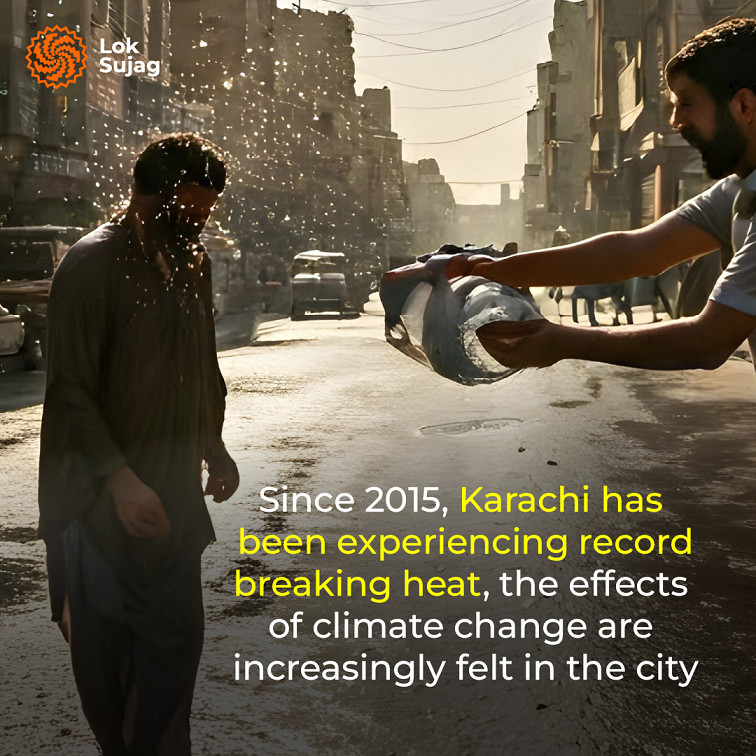
Due to power cuts, residents protested at several locations throughout the city. This not only led to road closures but also resulted in issues of law and order.
The demand for electricity in Karachi exceeds 3600 megawatts (MW), while the main electricity supplier, K-Electric, is only providing 2900 MW, resulting in a shortfall of 700 MW.
This discrepancy has led to widespread power outages, particularly in densely populated areas such as New Karachi Town, North Karachi Township, North Nazimabad Town, and Surjani Town.
Late-night blackouts have also affected neighborhoods like Liaquatabad, Azizabad, and Hussainabad. Administrative subdivisions such as Baldia Town, Orangi Town, and the locality of Lyari have been without power for several hours.
According to a K-Electric spokesperson Imran Rana told Lok Sujag, 70 percent of Karachi is receiving electricity as usual, but the remaining 30 percent are experiencing load management due to issues such as recovery and line losses.
What is K-Electric's Current Output?
According to Karachi Electric's report, the company operates five plants for power generation, producing 2,267 megawatts of electricity, while 1,400 megawatts are sourced from external providers.
Of the electricity sourced externally, 650 megawatts are supplied by WAPDA, and 750 megawatts come from various IPPs. In total, K-Electric has the capacity to generate 3,667 megawatts under normal conditions.
After electricity is generated, it is transmitted through a network of 69 grid stations and 1,287 kilometers of extra high-tension lines. Subsequently, power is delivered to consumers via 1,831 feeders and over 28,000 pole-mounted transformers (PMTs).
According to the company's report, its customers consist of 53 percent residential, 31 percent industrial, and 16 percent commercial users.
Karachi's Current Power Needs
Karachi contributes 20 percent to the country's Gross Domestic Product (GDP) and nearly 45 percent to tax revenue. Additionally, 60 percent of employees in large-scale industries are working in this city.
As the country's largest center for commercial and economic activities, it is evident that electricity consumption in Karachi is also high. The demand for electricity has been increasing each year. In 2014, the highest peak demand was 2,929 megawatts. By 2019, this had risen to 3,530 megawatts, and in 2020, peak demand was around 3,500 megawatts. In 2024, it has reached 26,500 megawatts, while the production capacity is limited to 20,253 megawatts. As a result, residents endure power outages lasting 12 to 14 hours, severely impacting their ability to stay cool and safe during this crisis.
What’s Behind the Power Shortages Despite Meeting Demand?
According to energy sector expert Arif Bulwani, it is crucial to understand that K-Electric is not a government entity but a private company. Like other private companies, it operates to generate and deliver electricity with the aim of maximizing profits.
Also Read
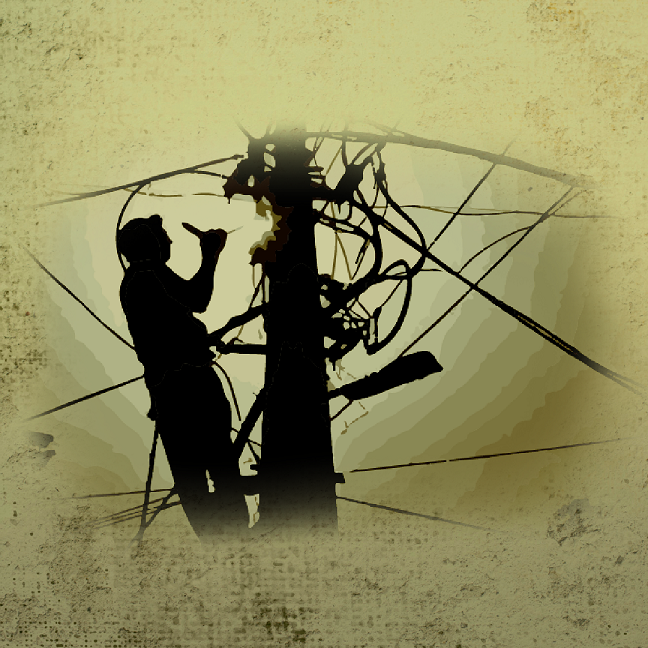
Why are consumers paying for line losses and electricity theft?
Karachi Electric Supply Corporation was established in 1913 and was nationalized in 1952. It was privatized in 2005.
Currently, it is the sole electricity provider in Karachi, serving 2.8 million consumers. In 2018, K-Electric reported a profit of 295 million USD.
In Pakistani Rupees, the company’s revenue exceeded 217 billion, with a net profit of 13.7 billion PKR, marking a 57 percent increase from the previous year.
Bulwani, in a conversation with Lok Sujag, stated that as long as government control and enforcement are not visibly effective, these issues will continue unresolved.
In response to a question about why there is so much load shedding if only 15 to 20 percent of K-Electric's generated electricity relies on furnace oil while the rest depends on gas, K-Electric spokesperson Imran Rana explained that the company has requested Sui Southern Gas Company to increase the supply due to a shortage of furnace oil. The gas supply has been increased from 190 MMCFD to 240 MMCFD, but it should be raised to 290 MMCFD so that all gas-powered plants can operate at full capacity.
However, Sui Southern Gas Company considers K-Electric's stance misleading, which attributes the electricity crisis in Karachi to the company's low gas supply.
According to the Sui Gas spokesperson, the Sui Southern Gas Company (SSGC) has increased gas supply to K-Electric from the usual 190 million cubic feet per day (MMCFD) to 240 MMCFD in response to the ongoing electricity crisis. However, the gas sale agreement between the two entities is a decades-old contract stipulating a supply of only 10 MMCFD. Separately, K-Electric has sought government approval to establish a coal-fired power plant.
Ali Asghar Poonawala, Deputy Head of Research at AKD Securities and a researcher specializing in the power sector, stated that K-Electric has been trying to obtain permission for coal-based power generation since 2016. However, K-Electric's request was made late. Currently, there is no perceived need for additional investment in electricity production in the country, as the nation is already generating more electricity than required.
Some experts emphasize that K-Electric actually does not want to generate electricity from furnace oil. This would increase the company's production costs and reduce profits.
Energy sector experts consider K-Electric's management policies as temporary measures and argue that the company is content with running its profitable business.
The Role of Line Losses in Load Shedding
Transmission and Dispatch Losses, also known as line losses, play a crucial role in electricity supply. Currently, K-Electric's line losses are approximately 20 percent. This inevitably leads to higher electricity bills for Karachi's residents.
However, according to K-Electric’s spokesperson, the company has invested over $3 billion since privatization to increase production capacity and reduce losses. This investment has enabled the production of an additional 1,057 megawatts of electricity and reduced line losses from 38 percent to 19 percent.
Energy sector expert Asad Mahmood states that such losses can be both technical and non-technical. While K-Electric has focused on reducing non-technical losses, such as theft, fraud, and tampering with meters, less emphasis has been placed on addressing technical losses. These include improving plant efficiency, protecting extra-high-tension lines from moisture damage, and using high-quality distribution wires.
According to Mahmood, K-Electric has reached a point where it believes that additional investment in this area will yield minimal returns. This is why there has been a noticeable decline in infrastructure improvement investments by K-Electric in recent years.
Asad Mahmood highlights that the National Electric Power Regulatory Authority (NEPRA), the government body responsible for regulating power generation companies, plays a significant role in this situation. NEPRA’s role is to guide power companies towards a direction that benefits consumers while ensuring the companies receive their fair profits.
Published on 31 Jul 2024
